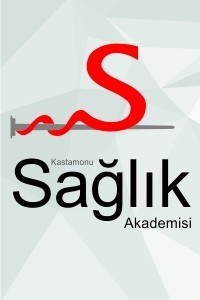ETAPAS DO ENVELHECIMENTO REPRODUTIVO: EFEITOS NOS NÍVEIS DE ADIPOSIDADE, ATIVIDADE FÍSICA E VISITA À NATUREZA
Introduction: Menopause marks an extensive period of hormonal changes in women. Estrogen depletion, combined with the aging process, increases fat mass, particularly intra-abdominal fat, and generates a decrease in muscle and bone mass, affecting women's usual levels of physical activity (PA) and compromising their quality of life. Exposure to the natural environment confers numerous health benefits, however, much remains unknown about the differences in the nature visits according to a woman's reproductive stages, and often PA levels are measured through questionnaires. Purpose: This study analyzed the variation of adiposity levels, PA and nature visits according to the stages of reproductive aging in women. Methods In this cross-sectional study, women aged 18 to 75 were categorized in the reproductive age (G1, n=94), menopausal transition (G2, n=12) and postmenopause (G3, n=36), considering the reproductive aging stages described in STRAW +10. Fat mass (FM, %) and visceral fat area (VFA) were assessed by octopolar bioimpedance (InBody 720). Physical activity (moderate-vigorous and steps/day) was measured using ActiGraph accelerometers (wGT3X-BT) and nature visits were assessed through a questionnaire. Analyses of variance were used to analyze the data. Some transformations of the variables were conducted, to normalize their distribution (moderate-vigorous PA) or to improve their asymmetry (VFA and nature visits). The standard significance level was set a p ≤0.05. Results: A higher percentage of women with obesity (%FM and VFA) and non-recommended levels of moderate-vigorous PA were recorded in group 3 (77.8%, 83.3%, and 72.2% respectively). Half of the women in G2 had high levels of total and central adiposity and levels of MVPA <150 minutes/week. Our results showed that women in G1 had lower percentage (p 0.01) FM values (28.24%) than those exhibited by women in G2 (34.25%) and G3 (36.55%), with 24% of the relative fat mass variation explained by the reproductive aging stages. For a type I error <0.05, there was a greater than 99% probability that percentage FM values varied with reproductive aging stages. The variation of VFA was also explained by reproductive aging stages by 46%, and differences (p <0.01) were identified between groups G1-G2 and G1-G3. Our results further documented that with reproductive aging, there is a decrease in moderate-vigorous PA levels, and differences (p <0.01) were observed between G1-G3. No differences were observed between reproductive stages for steps/day (p >0.05) and nature visits (p =0.17). Conclusions: Our results suggest that postmenopausal women evidence increased levels of total and central adiposity and simultaneously, limited levels of physical activity compared to women in the reproductive phase. These findings underline the need to implement PA programs oriented to weight control and to encourage the regular practice of PA adjusted to the needs evidenced by these women, contributing to a better quality of life for them. Funding: This work is supported by National Funds by FCT-Portuguese Foundation for Science and Technology, under the projects UIDB/04033/2020, UID04045/2020 and UIDB/00073/2020. The investigation was also supported by European funding program Interreg Atlantic Area, under the project (EAPA_772/2018-Triple-C).
STAGES OF REPRODUCTIVE AGING: EFFECTS ON ADIPOSITY LEVELS, PHYSICAL ACTIVITY, AND NATURE VISITS
___
- Reference 1 ..............................
